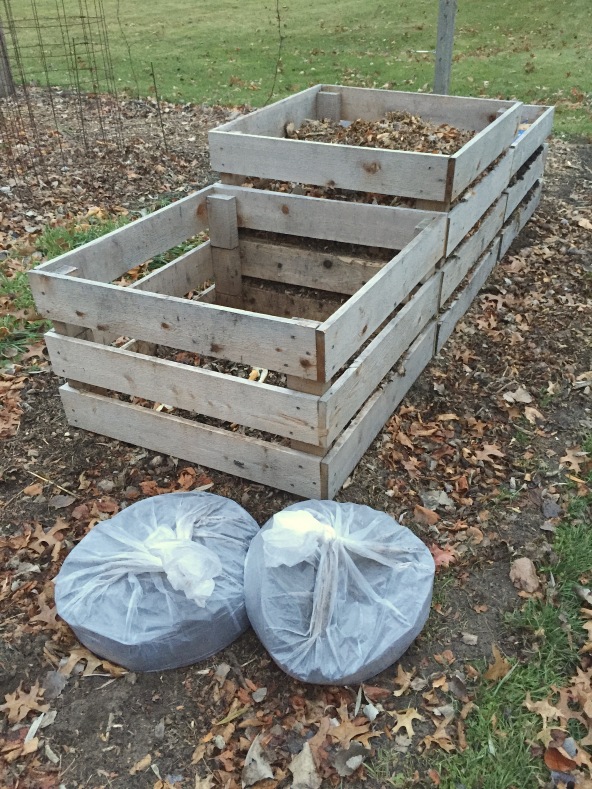60 pounds
Of coffee grounds.
Almost a good start for a Dr. Seuss book.
I’m pretty sure that nobody cares about some yahoo in Michigan picking up free used coffee grounds for his compost pile. But the thing is, there’s a small possibility that someone is just waking up on a Saturday, clicking through blogs with his morning coffee, and there’s a new opening for a Dr. Seuss book or something. Isn’t Dr. Seuss dead?
Another sentence or two and he’s reading about free coffee grounds and free shredded leaves converting themselves into free groceries. It’s morning; coffee’s just kicking in. Isn’t it possible that even though he immediately forgets about the dork who thinks people want to hear about his free garbage, something sparks for a guy who ends up getting his own
60 pounds
Of coffee grounds
And has the best garden ever?
I was thinking about this on my way home from Starbucks. It’s expensive stuff, coffee. I buy unused grounds at the grocery; I know. But imagine all the money all those folks at all those Starbucks paid for all those grounds to be made into all those cups of coffee.
And then imagine all those expensive coffee grounds being plopped into a huge, expensive garbage truck by a company who pays guys to dump crap at an expensive dump site into a pile that is basically nothing but a pile.
Maybe somebody who’s never thought about piles reads this with his morning coffee and decides to save his own 60 pounds of coffee grounds from the silly universe of expensive piles.


Coffee is the best for composting – I work in a diner and I’m bringing it home by the bucketful. It does wonders for seed propogation and makes an excellent straight up mulch too!
LikeLike
How lucky you are!
LikeLike
Awesome idea something so simple that I never thought of im sure some of the places around here would be happy to help thanks
LikeLike
I hope you have some success!
LikeLike
Or what about, even, that person who is just waking up realizes she could save her own used grounds and put them into the compost.
LikeLiked by 1 person
Shoot, i misspelled she 🙂
LikeLike
Reblogged this on World Organic News and commented:
Coffee and compost!
LikeLike
I seem to recall that aside from human hair, coffee grounds are one of the highest sources of nitrogen there is, so if you’re feeding that compost to green, leafy plants, I don’t really see how you can go wrong. And if you are like me, and you compost using worms, coffee grounds are one of the few foods that are ready too eat as far as worms are concerned, with no additional decaying time necessary.
LikeLike
You’re so right. And I’m looking forward to learning more about worms from your next blog about them.
LikeLiked by 1 person
That should be Sunday night at about midnight (the worms favorite hour) and if I’m not mistaken, its on “Environmental Conditions”. See you then.
LikeLike
It seems I was mistaken Dan, the next article is Part 4 of the longer Series I’ve been doing, and the Environmental Conditions article was already published earlier under the name “Compost Climates” (for aesthetic reasons). I’ve really been having second thoughts about continuing the longer series because when I ran it the first time, a lot of my results came about accidentally in bins that had gotten pushed out of sight for a matter of months, and when people tried to shorten the process, there were worm fatalities. Lol. I’ve been cautioning people this time, that this is not only an experiment, and an experiment that took a long time when I originally ran it. The reason I’m running it again right now is to see if I can once again duplicate these results, and I keep warning people that they should wait until I’m sure this is going to work before they risk any worm populations of their own. So with that in mind, the article I’m putting out tomorrow night (a new article that is just about finished) is an experiment they can try at home with a small number of worms to see if things work out before they try a large batch of their livestock. Sorry for the length of the reply, but you seemed interested, so I thought I’d give you a sneak-peek. Read you later.
LikeLike
Thanks for the sneak peak. And I wouldn’t jeopardize my main worm population on experiments. I dont have that many. No worries.
LikeLike
I’m glad you’re composting.
LikeLike
Me too!
LikeLike
Reblogged this on Ground to Ground and commented:
Legend!
LikeLike
I knew coffee grounds contained nitrogen I just didn’t realise they were a high source. I have read that they are a slow release fertiliser. As for those worms, they love the stuff. Adding more to a new bed tomorrow. Lucky me!
LikeLike
Right on all counts Julie. Isn’t it a good feeling to have a new batch of used coffee grounds, and aren’t we odd? 🙂
LikeLiked by 1 person
You would laugh if you could see the stack I have! I will never run out! 😀
LikeLike
I would more likely laugh and be envious!
LikeLiked by 1 person
For all the coffee I drink, you would think I’d never run out of grounds, but they sure do get used up fast, even here in my apartment, and my houseplants look like they’re planning on taking over the place. Lol.
LikeLike